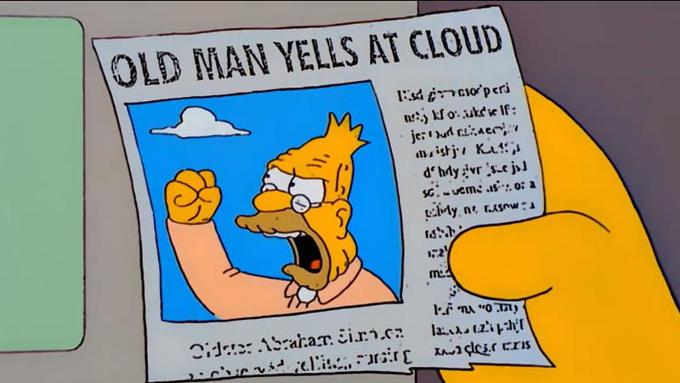
According to James Otis, “Taxation without representation is tyranny.”
Some American principles are so ingrained in our political consciousness that even mentioning them seems quaint and cliché. “Life, liberty, and the pursuit of happiness,” chief among them. “No taxation without representation” comes in a close second. Overuse has made such slogans sound trite in serious discourse. All this is to say that we are aware that complaints about taxation without representation typically elicit eye-rolls usually reserved for people demanding to “keep government hands off my Medicare.”
Nevertheless, we’re here to talk about taxation without representation. Specifically, the crazy quilt of municipal income taxes. The slogan will be used several times. Bear with us. Despite the stale phrase, we are not an old man yelling at a cloud.

In Ohio, local income taxes are collected by the government where your employer is located rather than where your home is located. This means that if, say, you live in Brookville but work in Dayton, the government you vote for is not the one that sets or collects income tax from you. If you don’t like the tax then too bad. You don’t even get a vote to voice your opposition. In some cases the local governments will find ways to double dip so you pay income taxes for both where you work and where you live. Brookville is a prime example, where they refuse to forgive anything over 1%, so that Brookville residents who work in Dayton pay the 2.5% Dayton income tax, plus an additional 1% to Brookville—making their effective income tax 3.5%. Brookville residents who work in Brookville only pay 2%
The argument for such a system—where individuals are clearly being taxed without being represented—is that the cities provide the infrastructure and services necessary to support these jobs. We, at Reconstructing Dayton, somewhat agree. However, just because the employer’s city needs the money more than the locations where employees live doesn’t mean the city is entitled to that money.
Much of the competition for jobs is tilted by local governments subsidizing businesses as “Economic Development.” Others businesses (who don’t make the appropriate campaign donations), are forced to fend for themselves. We’re seeing Kettering take a 1-2 punch with Synchrony Financial sending 1,700+ employees to work from home instead of the old DESC on Wilmington Pike. Kettering may lose those tax dollars. Similarly, WilmerHale is moving from the Research Park to Miami Township, where most of the workers pay zero income tax (except for in the JEDD at Austin Landing, where the retail workers pay a 2% income tax while the white collar workers pay nothing).
Now that work from home because of the coronavirus has become the new normal, people are questioning why their taxes are being exported. In March Governor DeWine signed House Bill 197, which provided coronavirus relief. One provision, Section 29, ensured that income taxes would continue to go to the government where an employer is located rather than where the employee lives (and now works). With the backing of the conservative Buckeye Institute, Senate Bill 352 and House Bill 754 have been introduced, which will repeal Section 29. It’s estimated that Ohio’s six largest cities, Dayton among them, could lose up to $306 million in tax revenue. Of course Mayor Nan Whaley has voiced her opposition:
Here we are in a period of great uncertainty and to be messing with the tax policy amidst it, we think is a really bad idea…There’s so much transition going on and it would be a nightmare for folks to manage when they’re trying to manage everything else.
“I’m just worried about logistics.”
Unfortunately, Nan just can’t be honest. No one would fault her if she just said she opposed the bills because Dayton stands to lose a ton of tax revenue. As the county seat, the city of Dayton has relied on collecting taxes from many high-paying jobs held by lawyers, corporate chiefs, and CareSource employees who were lured to work in Dayton with tax incentives while they safely live in Oakwood or elsewhere. That doesn’t make it right, but at least it’s honest. The Greater Ohio Policy Center makes this argument, showing that these bills will be disastrous for Ohio’s metropolitan areas and have devastating effects on our infrastructure. None of that can be contested. But it doesn’t make taxation without representation right.
What no one seems to consider—not the Buckeye Institute, The Greater Ohio Policy Center, and especially not Nan Whaley—is that our dependence on a system of taxation without representation is an indictment on the system itself. If we had a more regional focus with a county-wide government, it wouldn’t matter if someone lived in Germantown and worked in Dayton. The income taxes would go to the county and the county could spread that money appropriately to ensure that Dayton has the infrastructure necessary to attract large employers. It would simplify the tax structure, preventing suburban municipalities from acting like parasites, and, most importantly, eliminate taxation without representation. It would also simplify the calculus and collection for small businesses, like plumbers or HVAC technicians, who may have employees who work throughout the county.
All these lines on a map don’t make us stronger. They make us fuel sprawl as each community tries to one-up their neighbor in pursuit of jobs. Each time forcing more overhead as infrastructure requires upgrades, schools shrink, and farmers get squeezed out. When someone asks where you’re from, it’s Dayton, Ohio to anyone from outside our area. Because, no matter how self-important people think their city is—Oakwood, Kettering, Centerville, Brookville, etc.—it’s Dayton that counts.
We applaud Senate Bill 352 and House Bill 754 and will support their passage, but we do think they should go one step further and send all taxes to the government where one lives rather than works. As the Greater Ohio Policy Center points out, this will make things exponentially worse. But if we stop allowing tax dodge jurisdictions like urban townships, we could create a system that works for everyone. Income taxes should be county-wide and allocated based on factors such as population density and poverty reduction. Our fragmented system with dozens of tax districts in a single county is undesirable and unsustainable. The only reason these nearby municipalities, townships, and villages compete for tax dollars is because they were fragmented for the days of the horse and buggy. Back then nobody commuted to work and Kettering was farmland. Now that commuting has become trivial and urbanization has sprawled throughout the entire eastern part of the county, our economic regions have grown and merged into one large metropolitan area. By maintaining our antiquated boundaries, we create cannibalistic competition between these municipalities as they fight for business and revenue. Instead of trying to hold it together with the duct tape and glue of unfair tax rules, parks districts, school districts, health districts, water conservancy districts, educational services commissions, Joint Economic Development Districts (JEDDs), Tax Increment Financing Districts (TIFs), and Special Improvement Districts (SIDs), we need to focus on creating a local government that is efficient and modern. Most importantly, it has to be fair, transparent and sustainable.


0 Comments